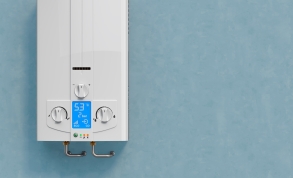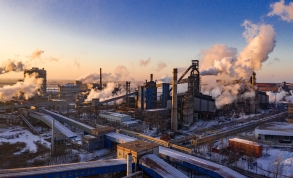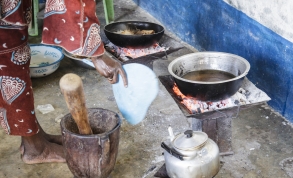Abstract
Between 1995 and 2011, the Surat Municipal Corporation (SMC) made large investments in the water supply infrastructure in Surat, India. The city expanded the coverage of the piped water supply network and increased the sewage treatment capacity by expanding the sewerage network and upgrading existing treatment plants. The upgraded plants use an anaerobic sewage treatment that enables the capture and use of methane for power generation. These investments have reduced CO2 emissions and improved water quality. Anaerobic treatment has also led to the production of organic manure, which is sold to farmers in the vicinity of the plants.
Intervention overview
India’s population is expected to grow to 1.52 billion by 2036, a 25% increase from 2011, and 70% of this population growth is expected to be in urban areas (Technical Group on Population Projections, 2020). Alongside this population growth comes an increased pressure on infrastructure, such as the provision of safe drinking water and the treatment of sewage. For example, it is estimated that approximately 40,000 million litres per day (MLD) of sewage are generated in major cities in India, but there is currently only around 12,000 MLD of sewage treatment capacity - a significant gap between demand and supply in sewage treatment infrastructure.
In addition, India ranks 13th among the 17 worst affected countries in terms of water stress, indicating significant potential for water scarcity in the country. Sustainable, well-designed water treatment solutions can therefore result in multiple benefits for the environment, through methane capture and utilisation for energy as well as providing a safe water supply to a growing population under threat of water scarcity.
Between 1995 and 2011, the Surat Municipal Corporation expanded its sewerage network and upgraded existing sewage treatment plants to reduce dependence on suboptimal disposal mechanisms such as septic tanks or private drainage networks. In addition, sewage sludge underwent anaerobic treatment, which restricts the atmospheric emission of methane gas and allows for its utilisation as a fuel to run the gas engines that produce electrical energy needed to operate the sewerage system, instead of relying on grid electricity. Furthermore, the sewage removed after anaerobic treatment was converted to organic manure and sold to the farmers in the vicinity of SMC.
Outcomes
The project resulted in a reduction of 80,000 tonnes of CO2 equivalent (CO2eq) emissions per year from four sewage treatment plants. Before implementation, the annual baseline CO2eq emissions from each sewage treatment plant was between 19,000 and 27,000 tonnes. After implementation, the annual emissions reduced to a range of 3,000 and 5,000 tonnes of CO2eq from each plant.
Treatment of sewage in this manner has resulted in improvements in the water quality, measured in terms of declines in the Chemical Oxygen Demand (COD), Biochemical Oxygen Demand (BOD) and Suspended Solids (SS) indicators. However, the Total Dissolved Solids (TDS) remained high, which was likely to be due to chemical treatment (chlorination) of water before discharging it to the water bodies.
In addition, from 2009, the four sewage treatment plants have produced 3,000 to 5,000 tonnes of organic manure per year, generating a total revenue of approximately 2.5 million Indian Rupees (INR) per year. The study also reports that each power plant requires a manpower of three electrical engineers, one electrical fitter, one wireman and one cleaner. As a result, a total of 32 new jobs were created for the four plants.
Feasibility and potential impact of scale-up
The city of Surat treats a total of around 1,400 million litres per day (MLD) of sewage water, out of which 320 MLD (33%) is reused. If the sewage treatment approach discussed here were to be scaled up to the entire volume of waste water produced in Surat, savings of approximately 240,000 tonnes of CO2eq could be achieved in the city. It is estimated that approximately 38,000 MLD of sewage is generated in major cities in India. Therefore, applying this approach of sewage treatment to all major cities in India could potentially save 6.5 million tonnes of CO2eq per year.
In addition to the contribution towards greenhouse gas mitigation efforts, this will also have positive effects for human health, as currently, untreated wastewater is discharged into surface as well as groundwater, which is the leading cause of water pollution in India. The Indian Constitution encourages urban local bodies to take responsibility for the development and maintenance of urban areas. The City of Surat is divided into seven municipal administrative zones for decentralised administration. This decentralisation within the Surat Municipal Corporation (SMC) may have increased the efficiency and function of urban governance in Surat.
The SMC also involved the private sector in the provision of urban services, such as the implementation of new technologies in the sewage treatment plants, engagement in the operation and maintenance of these plants, such as the de-silting of manholes and drainage lines. This resulted in increased efficiency and function of these services.
In one study, the perceptions of key facilitators and barriers in governance structures for wastewater treatment and reuse in India were investigated through engaging with 75 stakeholders in the field and examination of the literature (Breitenmoser et al., 2022). The study found that the most important driver for wastewater treatment and water reuse is water scarcity, indicating a need for water reuse solutions to help meet population demands for water supply. In contrast, important barriers include inadequate collaboration between central and state governments, which results in duplicative functions; lack of an umbrella directive for integrated water resources management, meaning there are no clear action plans to operationalise policies promoting wastewater management; and finally, weak enforcement and monitoring mechanisms of such policies, and unclear responsibilities leading to conflict between different water-related ministries.
A few Indian states, such as Maharashtra, Punjab, or Gujarat (where Surat city is located), however, have been able to define reuse standards and establish successful wastewater treatment and reuse approaches. This is because they were able to establish an effective governance structure, which ensures that regulations are enforced and monitored, and long-term operations are supported by appropriate financing mechanisms.
References
Academic profile / relevant organisation’s page
- Kapshe M, Kuriakose PN, Srivastava G, Surjan A. Kapshe, M., Kuriakose, P. N., Srivastava, G., & Surjan, A. (2013). Analysing the co-benefits: case of municipal sewage management at Surat, India. Journal of Cleaner Production, 58, 51-60.. Journal of Cleaner Production. 2013 Nov 1;58:51-60.
- Surat Municipal Corporation. (n.d.). Treatment plans. Available online: https://www.suratmunicipal.gov.in/Departments/DrainageTreatmentPlants
Supplementary information
- Surat Municipal Corporation. (n.d.). Treatment plans. Available online: https://www.suratmunicipal.gov.in/Departments/DrainageTreatmentPlants
- Breitenmoser, L., Quesada, G. C., Anshuman, N., Bassi, N., Dkhar, N. B., Phukan, M., Kumar S., Babu A.N., Kierstein A., Campling P., & Hooijmans, C. M. (2022). Perceived drivers and barriers in the governance of wastewater treatment and reuse in India: Insights from a two-round Delphi study. Resources, Conservation and Recycling, 182, 106285.



